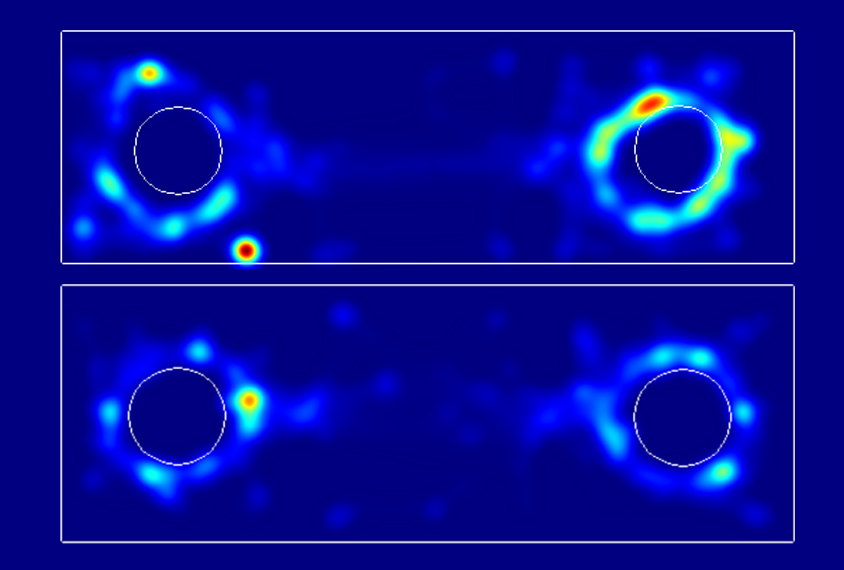Mice and zebrafish that lack the autism-linked gene GIGYF1 show atypical social behaviors, according to a new study. The findings tie variations in the gene to social traits in autistic people, the researchers say.
Among the genes strongly linked to autism, GIGYF1 ranks as the second most commonly mutated one in people with autism and related neurodevelopmental conditions. But little is known about the gene’s contribution to autism traits, says Bo Xiong, professor of forensic medicine at Huazhong University of Science and Technology in China. Initial findings point to a role in regulating social behavior: Deleting the gene blunts social memory in mice, through mechanisms thought to be mediated by impaired insulin signaling.
GIGYF1 is also implicated in other pathways — including autophagy and mRNA regulation — that are often altered in people with neurodevelopmental conditions, says Jeremy Veenstra-VanderWeele, professor of developmental psychiatry at Columbia University, who was not involved in the study. “But it had not previously been rigorously studied for its impact on neurodevelopment and downstream behavior,” he says.
X
iong and his colleagues combed sequencing data from SPARK, a project that aims to collect genetic and clinical information from 50,000 families that have at least one child with autism. (SPARK is funded by the Simons Foundation, Spectrum’s parent organization).They identified seven new GIGYF1 mutations and pooled the data with 19 previously reported variants. Cross-referencing with clinical information revealed that 86 percent of people with GIGYF1 mutations have autism. A similar proportion have communication difficulties and social phobia, alongside sleep problems and delayed speech.
Zebrafish embryos edited via CRISPR to lack GIGYF1 develop more slowly than their wildtype counterparts, Xiong and his colleagues found. As adults, the fish are more anxious and less willing to socialize.
Zebrafish are typically highly sociable: They rarely swim alone, preferring to travel in clusters called shoals. When placed in a three-chambered enclosure with a fish at one end and an empty chamber at the other, wildtype fish will opt for company. But fish lacking GIGYF1 prefer solitude and appear anxious, frequently darting around the tank. What’s more, they form looser shoals, maintaining more distance between themselves and others.
Mice engineered to express just one copy of the GIGYF1 gene also display social deficits. When the researchers tested for social novelty — a mouse’s inclination to investigate a stranger over those it already knows — the mutant mice stayed near the familiar mouse. GIGYF1 deletion also triggered repetitive behaviors, one of the core traits of autism.
The study “plays to the strengths of each model,” says Julia Dallman, associate professor of biology at the University of Miami in Florida, who was not involved in the study. For example, delayed embryogenesis is easier to spot in zebrafish, which develop outside their mother’s body, than in mice. “These different models can provide complementary windows of insight into gene function,” she says.
But the fish could be tweaked to better reflect the genetics of autism, says Dallman. The study used zebrafish lacking both copies of GIGYF1, but people with the condition have one mutated copy and one functional copy.
Disrupting both gene copies “is a good way to understand the biological importance of GIGYF1 but does not model the human condition,” Veenstra-VanderWeele agrees.
M
ice missing a copy of the gene in only their excitatory neurons still showed repetitive behaviors and impairments in social novelty. Yet deleting a copy of GIGYF1 in only inhibitory neurons triggered a different set of traits, including heightened anxiety and poorer cognition, suggesting that GIGYF1 plays distinct roles in different cell types.The findings were published 14 March in Biological Psychiatry.
Exactly how GIGYF1 variants cause changes in social behavior remains an open question. “Right now, we only know a small piece of the whole picture. We still don’t know the exact molecular mechanisms by which these mutations cause behavioral defects,” Xiong says.
Initial findings hint at changes in neuronal communication. By screening for transcripts and proteins that bind to GIGYF1, the researchers identified hundreds of downstream targets, including several involved in synaptic transmission. They are now harnessing electrophysiology to see how GIGYF1 deletion in mice influences neuronal chatter.
Because GIGYF1’s function appears to be conserved among animal models, it would be interesting to see whether similar effects are seen in organoids and stem cells, says Cátia Igreja, a researcher at the Max Planck Institute for Biology in Tübingen, Germany, who was not involved in the study. If so, scientists may be able to pinpoint GIGYF1’s molecular mechanisms and identify potential therapeutic interventions that alleviate GIGYF1 deficiency, she adds.






